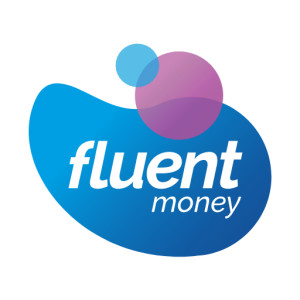Bridging Loans

Bridging loans offers

Santander offers various loans for personal needs, cars, home improvements, consolidating debts, and special occasions.
Pros and cons

Lloyds Bank personal loans offer flexibility, attractive rates, same-day funds, repayment holidays, and early settlement options.
Pros and cons

Shawbrook, an award-winning specialist bank, excels in serving diverse customers with comprehensive financial products, including flexible personal loans.
Pros and cons

Fluent Money offers a range of loans, including secured, bridging, and consolidation options, each designed with competitive rates to meet specific financial needs.
Pros and cons
Comprehensive Overview of Bridging Loans
Bridging loans are financial products tailored to offer short-term finance solutions for individuals and businesses. We have compiled this detailed guide to help you understand the various aspects of these loans, their benefits, and how they could be effectively utilized.
What Are Bridging Loans and Their Purpose?
A bridging loan is used to cover one's finances between the purchase of a new property and the sale of another or other existing ones. It is, hence, very effective in situations that call for instant funding. These loans are majorly used by property developers, homeowners, and investors to get a new property before selling the one they have.
In 2023, the UK's bridging loan market reached a peak of £831 million, representing an increase of 16% over the previous year. This surge underscores the growing popularity of such loans as flexible financial solutions in the face of market uncertainties (MoneyAge).
How Do Bridging Loans Differ from Other Loan Types?
Compared to the conventional type of loan, these loans are usually short-term and have higher interest rates since one is given money quickly. They are designed to be repaid in months or even a couple of years. Moreover, bridging finance loans can either be secured against the purchased property or other assets, hence providing flexibility for borrowers.
To understand the differences more clearly, let's look at some of the key differences between a bridging finance loan and other types of loans:
- Purpose: Short-term finance options are designed for urgent, interim requirements, while conventional loans serve long-term ones.
- Repayment Tenure: It may extend from a few months to a couple of years, although short–term financing is usually taken for a very short period.
- Security: The loans can be secured against properties or other assets.
As such, bridging loans provide specific benefits and flexibilities to the needs of modern man in his search for rapid, short-term finance. Knowing these can go a long way in deciding whether this is the right loan for you and your circumstances.
Various Types of Bridging Loans
When it comes to loans, one needs to consider the various types. Each type is meant to cater to specific needs or conditions. It becomes fundamental to make the right choice in your case. In this section, you'll find a detailed overview of different types.
Open vs. Closed Bridging Loans
Open loans do not have a fixed repayment date, as closed bridging loans do. Borrowers with a confirmed exit strategy, such as a pending property sale, often opt for closed loans.
But before you go for a loan, here are the features of major differences to be seen amidst open and closed types:
- Closing Date: Fixed for Closed, Flexible for Open.
- Interest Rates: Normally higher when open because of the greater risk involved.
- Borrower Profile: Closed suits those who have a clearly defined exit plan best.
Closed loans provide certainty in terms of a set repayment date, while open bridging loans are incredibly flexible when an exact exit strategy is as yet not apparent.
Residential vs. Commercial Bridging Loans
The difference between a loan for residential purposes and a loan for commercial purposes is in terms of the asset variety and purpose. Being aware of this can empower you with an intelligent decision when going for the type of loan that you want to apply for.
Below are some common uses of both the residential and commercial loans to help you identify which one is in need:
| Loan Type | Common Uses |
| Residential | Buying a new home before selling the current one |
| Remodels, restor | |
| Commercial | To buy commercial property |
| Short-term business expansion funding |
One may choose residential or commercial loans, assessing the nature of the property and the financial objectives intended to be achieved by the borrower.
First Charge vs. Second Charge Bridging Loans
Another crucial distinction in loans is between first-charge and second-charge loans. This will affect priority repayment and the bridging loan interest rates that you might expect to pay.
The table below compares some features of the first charge and second charge bridging loans to help illustrate the differences.
| Feature | First Charge Loan | Second Charge Loan |
| Priority | Primary | Secondary |
| Interest Rates | Lower | Higher |
| Risk Level | Lower | Higher |
| Common Usage | Property purchase, development | Additional funding on mortgaged property |
First charge bridging loans usually have less hassle and lower interest rates, whereas second charge loans help to offer more available options where there is already a charge on the property relating to a mortgage.
In short, the available bridging loan types offer various benefits and dangers. Understanding this can aid in the choice of loan type that best fits with your level of specific performance of your given financial situation and goals.
Key Features and Benefits of Bridging Loans
Such loans, in essence, incorporate a few key features and benefits for short-term financing. Let us look at some of the primary advantages given by these loans.
Speedy Approval and Fund Disbursement
Probably one of the greatest benefits associated with these loans is how fast they are approved. In some days, funds can be availed, making them quite an ideal solution when in a dire need of financial help.
Many are the advantages that come with such speedy approval, including:
- Immediate access to funds.
- Ability to secure property quickly.
- Reduces financial stress in situations of urgency.
The ability to secure funding quickly can make a significant difference in time-sensitive transactions, such as property purchases.
Short-Term Financial Solution
Being short-term, bridging loans typically run from a few months to a couple of years. This, therefore, makes them especially suitable for conquering those temporary cash flow issues or closing financial gaps.
Typical use cases for loan are:
- Property Development: Financing the development of properties.
- Auction Purchases: The raising of significant funds as quickly as possible to buy properties from auctions.
- Business Needs: Short-term funding for business projects.
For short-term finance requirements, bridging finance loans are ideal to raise quick finance as they don't involve long-term liabilities.
Competitive Interest Rates and Flexible Terms
While rates for bridging loans are usually higher compared to traditional mortgages, they remain competitive within the short-term lending market. Furthermore, there is room for negotiation of flexible terms with regard to the financial situation and repayment plans of a borrower.
Some of the many factors acting upon the interest rates of loans include:
- Amount of loan.
- LTV ratio.
- Creditworthiness of the borrower.
Flexible terms and competitive bridging loans rates make it very attractive for people who look out for temporary help in finance.
In other words, these loans come with a number of key benefits, which include quick access to finance, short-term financial solutions, and competitive bridging loans interest rates — making them, hence, a rather versatile tool for solving immediate financial problems.
Eligibility Requirements for Bridging Loans
Some eligibility criteria need to be met to secure a bridging loan. Knowing what the requirements are can help you prepare and improve your chances of approval ahead of time. The following is an examination of what lenders usually look for.
Evaluating Your Financial Health
Your financial health will be assessed based on your credit history, outstanding debts, and monetary income. The better your financial profile is, the better terms you are likely to get.
An in-depth assessment of financial health will ensure that the borrowers can meet their repayment obligations and manage the loan effectively.
Enhancing Your Loan Eligibility
You can enhance your bridging loan eligibility at the best rates by improving your credit score, reducing existing debts, and maintaining a stable income. A well-planned exit strategy will also help in increasing your chances of acceptance.
Here are a few of those tips to make you more eligible:
- Pay off your existing debts.
- Ensure stable, documented income.
- Set up a clear and realistic exit strategy.
It can help not only in improving eligibility but also in getting better interest rates and loan terms by enhancing one's financial profile.
Selecting the Right Bridging Loan Provider
It's essential to go with a reputable and experienced bridging loan provider. Researching providers, comparing what they offer, and reading reviews enables you to make the most informed decisions.
Considerations for selecting a provider would include:
- Reputation: Check the reviews and ratings.
- Experience: Look for experienced lenders.
- Terms and Conditions: Compare bridging loan fees and their interest rates.
Choosing the right provider can make all the difference in your borrowing experience and overall satisfaction.
Loan eligibility is summarized into three easy steps: first, check your financial health; second, work on improving your profile; third, create your profile with the right provider. This should get you a loan on the best available terms.
Apply for a Bridging Loan
An application for a loan is a structured process requiring some groundwork. Careful preparation of the steps and documentary requirements shall help fast-track your application. In this section, we will examine the process of applying for a loan and the necessary documentation.
Documentation and Information Required
To apply for a bridging loan, one has to look forward to providing many documents, such as proof of one's identity, property details, and financial statements. All these documentations are usually directives for the bridging loan companies toward assessing one's eligibility and viability of the loan.
Documents usually required include:
- Identity Proof: Passport or Driver's License.
- Property Information: Valuation reports, ownership documents.
- Financial Statements: Bank statements, income proof.
These ensure complete and accurate documentation, which in turn, speed up the application process, therefore increasing the chances of approval.
Step-by-Step Guide to the Application Process.
A loan application follows a definite procedure to ensure that all the steps involved during application are comprehensively covered.
Our team has broken down this process into clear, manageable steps to help you navigate through it smoothly:
| Step | Description |
| Research Lenders | Find bridging loan lenders with suitable terms. |
| Prepare Documents | Collect necessary documentation. |
| Submit Application | Complete and submit the application form. |
| Assessment | Lender evaluates your application and property. |
| Approval | Receive loan offer if approved. |
| Disbursement | Funds are disbursed upon acceptance of the offer. |
Following a structured application process ensures a smooth and efficient experience.
Finally, applying for a loan needs detailed preparation and understanding of the process. Follow these steps above, and you will stand a great chance of succeeding.
Managing Your Bridging Loan
By properly managing your loan, you can prevent financial disappointment and ensure that all payments are made on time. Let's now focus on effective loan management.
Setting Up Timely Repayments
A proper plan of repayments will help you deal with the loan more effectively; so make reminders or automate the payments to ensure timely repayments.
Here are some of the ways to ensure that you make timely repayments and get back on track:
- Use calendar reminders.
- Set up automatic transfers from your bank.
- Check your payment schedule often.
Timely repayment is essential in helping to maintain good financial standing and avoiding any extra charges.
Benefits of Early Loan Repayment
You can save on interest costs and improve your credit profile by repaying the loan early. Check for any early repayment fees before you go about it.
In many cases, early repayment may relieve your pocket and boost your creditworthiness.
Dealing with Financial Setbacks
If you happen to run into some financial difficulties, communicate with your lender to see options like loan restructuring or temporary relief. Proactive communication avoids drastic consequences.
Here are steps to manage financial setbacks:
- Communicate Early: Contact your lender as issues arise.
- Explore Options: Discuss possible solutions like restructuring.
- Seek Professional Advice: You should also seek advice from financial advisors.
Immediate attention to reducing financial setbacks can remarkably avert risk and come up with alternative solutions.
In summary, handling a bridging loan is about timely pre-arrangement of repayments, likely benefits of early repayment, and a proactive approach to financial setbacks. These practices will help to smoothly go through the loan process.
This article offers you an all-inclusive guide about bridging finance loans to ensure that you are very well informed about the features, benefits, and how applications happen. You will be in an excellent position to make informed decisions on the choice of financial solution upon understanding the various aspects of loans.
Pros and cons
Pros
- Quick access to funds
- Flexible repayment terms
- Useful for time-sensitive transactions
- Can be secured against various assets
- Helps bridge financial gaps
Cons
- Higher interest rates
- Short repayment period
- Can be more expensive than traditional loans
- Potential for high fees
Frequently Asked Questions About Bridging Loans
What is a bridging loan?
A bridging loan is a short-term financial solution designed to bridge the gap between the purchase of a new property and the sale of an existing one. It's particularly useful in competitive markets where immediate funds are needed.
How do I qualify for a bridging loan?
In general, the ability to qualify for a loan usually requires a good credit history, well-thought-out exit strategy, and enough equity in your current property. Your lender will also need to be convinced that you can repay within the specified period.
What documents are required to apply for a bridging loan?
Other requirements when applying for a loan include documents showing the source of income, details of the property, an exit strategy, and identification among others. A valuation report of the property involved may also be a requirement.
How quickly can I get approved for a bridging loan?
Loan approval times can be speedy—if you consider that, it could be in 24-48 hours. But this is all relative to the lender's ability and how complete your application details may be. Fast bridging loans can expedite this process.
What interest rates can be considered normal for bridging finance?
Interest rates for these loans are generally higher than traditional mortgages, reflecting the short-term and high-risk nature of these loans. Rates vary, so using a bridging loan calculator can help you estimate costs.
Can I get a bridging loan if I have a poor credit history?
It is possible to get a loan with bad credit, though very often, it proves to be burdensome. Bad credit bridging loans are available, but generally at higher interest and stricter terms.
How do I repay a bridging loan?
Most such loans are repaid by selling the existing property or through long-term financing. You should have an appropriate schedule for the repayment to avoid unwanted hassles.
Can I repay my bridging loan early?
Most of these lenders allow an individual to make an early repayment of a loan, although one has to be sure that there are no charges for early repayment. Closed bridging loans usually have specific terms attached to early payments.
What happens if I miss a payment on my bridging loan?
Missing a payment on a loan can result in excessive fees and hit your credit score. It is essential to contact your lender immediately if you think there may be an issue.
Are there any hidden fees with bridging loans?
Loans may be related to several charges, such as arrangement, valuation, and legal fees. Ensure that you ask about possible costs before you commit.
How does a bridging loan affect my credit score?
Properly managed, a loan should not interfere with your credit score negatively, but missed payments or defaulting on the loan can significantly ruin your credit rating.
What are the differences between open and closed bridging loans?
While open bridging loans do not have a fixed date for repayment, closed loans have a definite date that can frequently correspond to the sale of a property or another event of known financial value.
Can I apply for a bridging loan online?
Yes, most lenders have an online loan application. Using a bridging loan calculator can help you evaluate your alternatives before applying.
How do I choose the best lender for a bridging loan?
Find the best lender by comparing interest rates, fees, terms, and customer reviews. Ensure tools, like compare bridging loans aid the process.
What are the benefits of a bridging loan?
The significant advantage of this loan is the fast, easy access to money that will enable you to purchase properties quickly and not allow opportunities to slip away. Short term bridging loans are flexible and fast in realization.